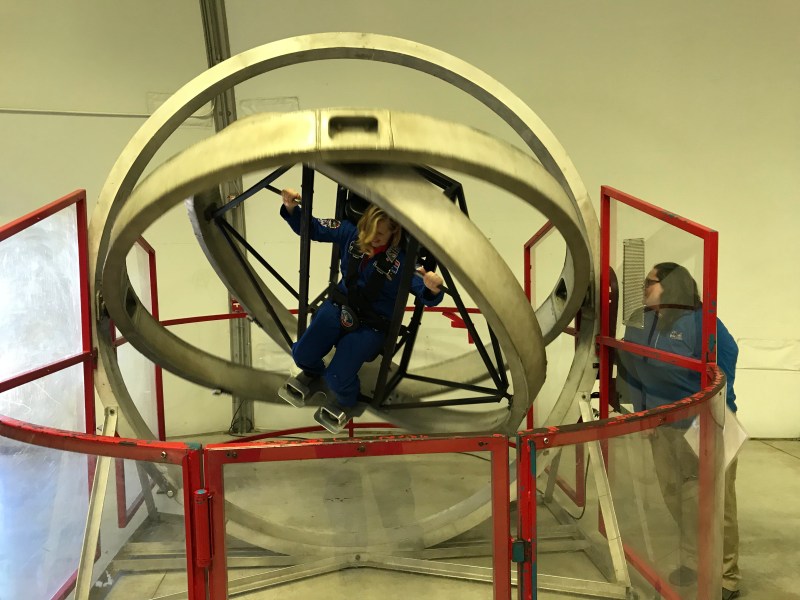Space is making a comeback as American culture reaches beyond the fictions of Star Wars and it’s like to look up into what real adventures await in the stars. From TV shows to travel opportunities, folks are looking to learn about the real challenges and wonders beyond Earth.
While fantasy and sci-fi treatments still abound, more realistic movies like Gravity and The Martian helped to remind people about the wonders of space exploration following a historical and cultural lull after the retirement of the NASA Space Shuttle Program. Somehow, the maintenance of the International Space Station doesn’t have that same sense of adventure to fire the imagination.
All exploratory eyes are turning away from Earth’s orbit and out to the Red Planet as a crewed mission to Mars is becoming the goal of governmental and private space programs around the world. To that end, the Trump Administration recently signaled an end to funding for the ISS in 2025 to redirect NASA budgets toward a Mars Mission.

A Space Camp team poses for its graduation photo in a view portal mockup from the International Space Station. (John Scott Lewinski)
The National Geographic Channel’s MARS television series offers a carefully researched and fact-based, though fictional account of humanity’s first interplanetary colonization featuring the commentary of experts such as Stephan Petranek (author, How We’ll Liven Mars) and Elon Musk. MARS will return this year for its second season, and its cast took advantage of a freshly minted adult training program at Space Camp in Huntsville, Ala.

The camp and its Space Academy always welcomed kids to train as junior astronauts in simulations and activities based on real NASA facilities. Now, science-minded grownups can delve into the same exercises in three-day summer gatherings. The camp schedules included simulated space missions, team building exercises, artifact tours and zero-G simulations.
In keeping with NASA’s new focus on Mars, the Space Camp experience wraps up with a mission to Earth’s nearest interplanetary neighbor. Campers split into two groups — a Mission Control team and the four astronauts making the one-way trip through space to become the first humans to live their lives on another planet.
A three-day, two-night camp books for $549 per person with 50 percent due at booking. The experience includes lodging and meals on site.

For the well-heeled space exploration enthusiast, a new pleasure flight offers a chance to see the Earth from an astronaut’s perspective for an admittedly considerable price. TrulyExperiences.com offers pricey, once-in-a-lifetime experiences for elite travelers. The company added space to its menu with Bloon – a zero-emission vehicle using static helium gas to lift a passenger capsule 22 miles into the Earth’s atmosphere — just on the brink of space. The gradual ascent uses no rocket fuel and avoids violent G-forces as the Bloon quietly and gently ascends with no environmental impact.
The Bloon is a stratospheric balloon designed by Zero2Infinity. The day-long, round trip experience will cost you $625,000, but you can choose where the flight will begin and what you’ll eat onboard. Michelin-star meals are on standby. The pressurized cabin holds up to four passengers, with Zero2Infinifty promising more room per human onboard than an Airbus A380 First Class cabin. Of course, panoramic windows provide a 360° view on the edge of space experience.
The travel pod is safe for adults and children, and kids under 16 must be accompanied by a guardian. The booking fee covers one to four people per pod, and all travelers must have a report from a physician with a simple medical checkup pre-flight.

Bloon travelers must arrive at the takeoff location the day before liftoff for a briefing and some rest. Lift-off fires up around 4 a.m. to catch dawn on the edge of infinity. The ascent takes around one hour before the Bloon cruises near-space for about two hours. Descent is as gradual as the climb.
TrulyExperiences is taking bookings now for 2018. All flights are subject to weather. It’s one of the first private sector space tourism opportunities, but — with more people rediscovering the excitement of exploration — more are preparing for launch.
This article appeared in an InsideHook newsletter. Sign up for free to get more on travel, wellness, style, drinking, and culture.

























